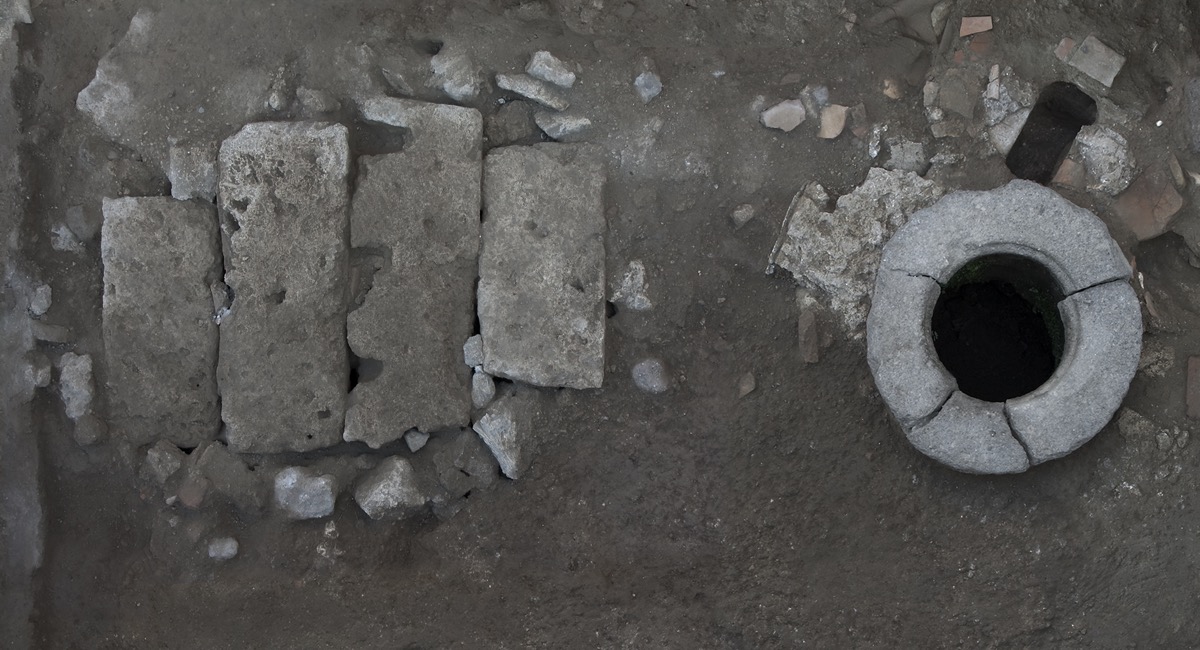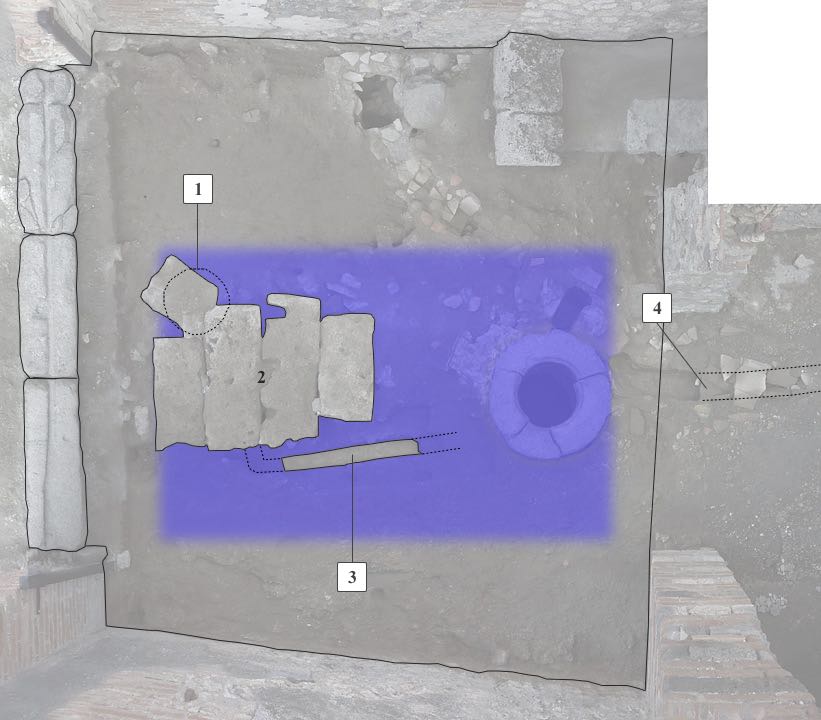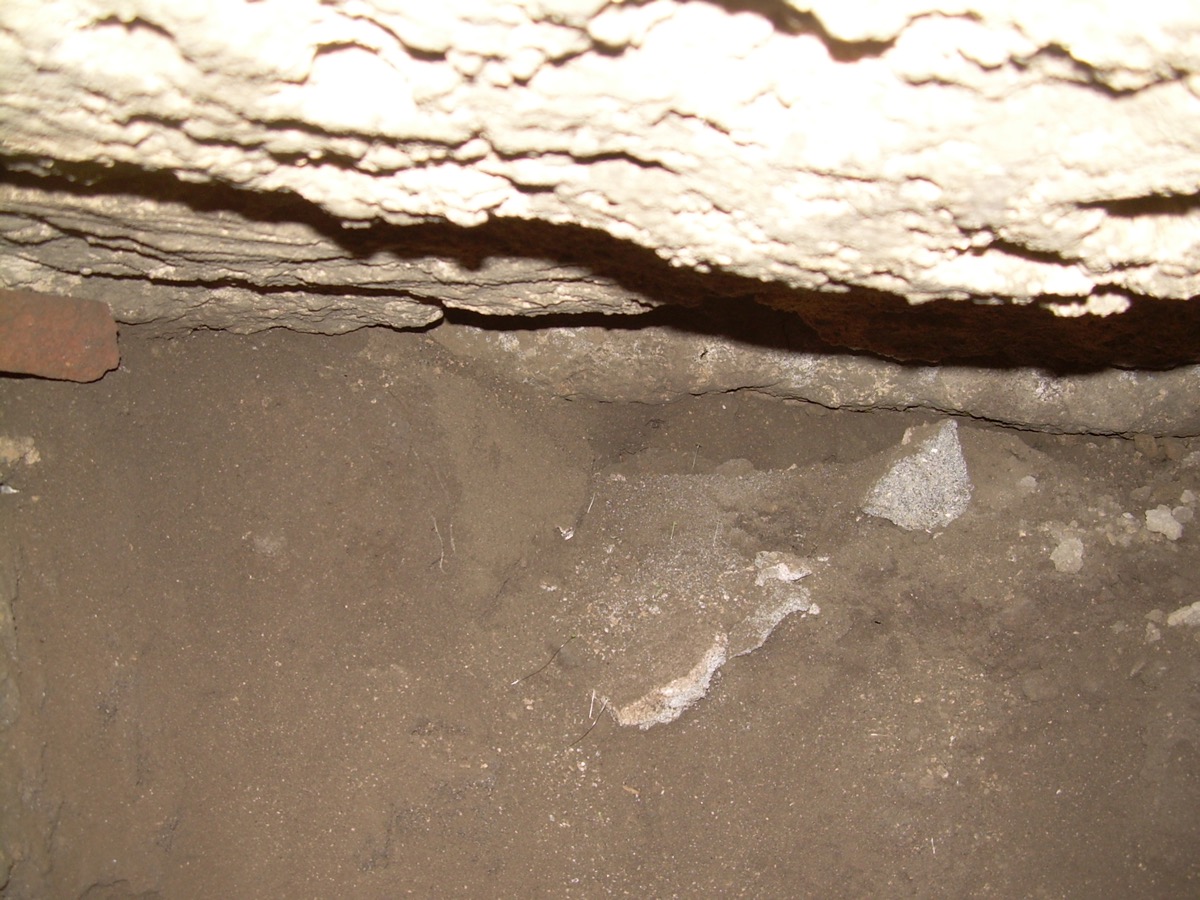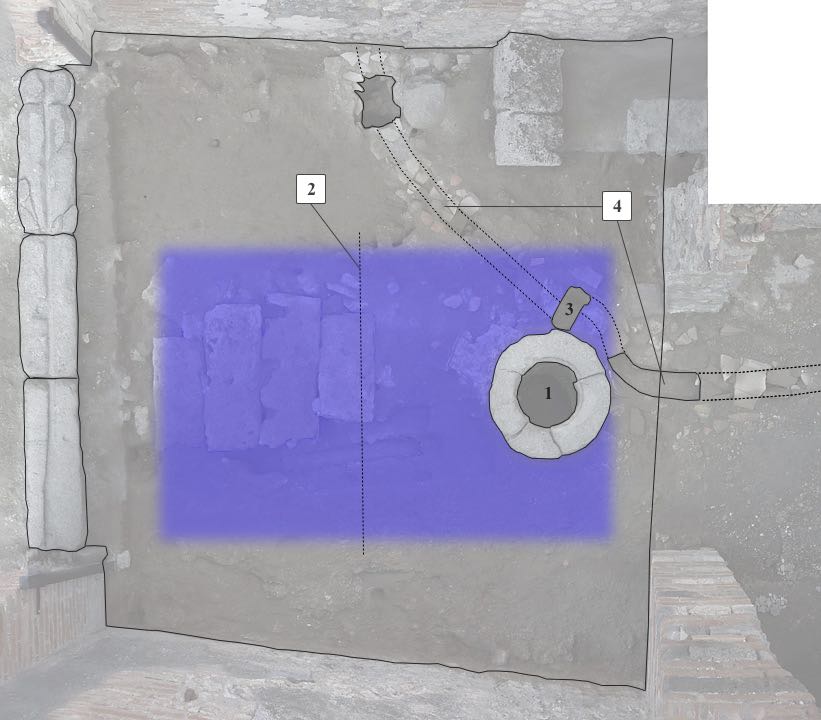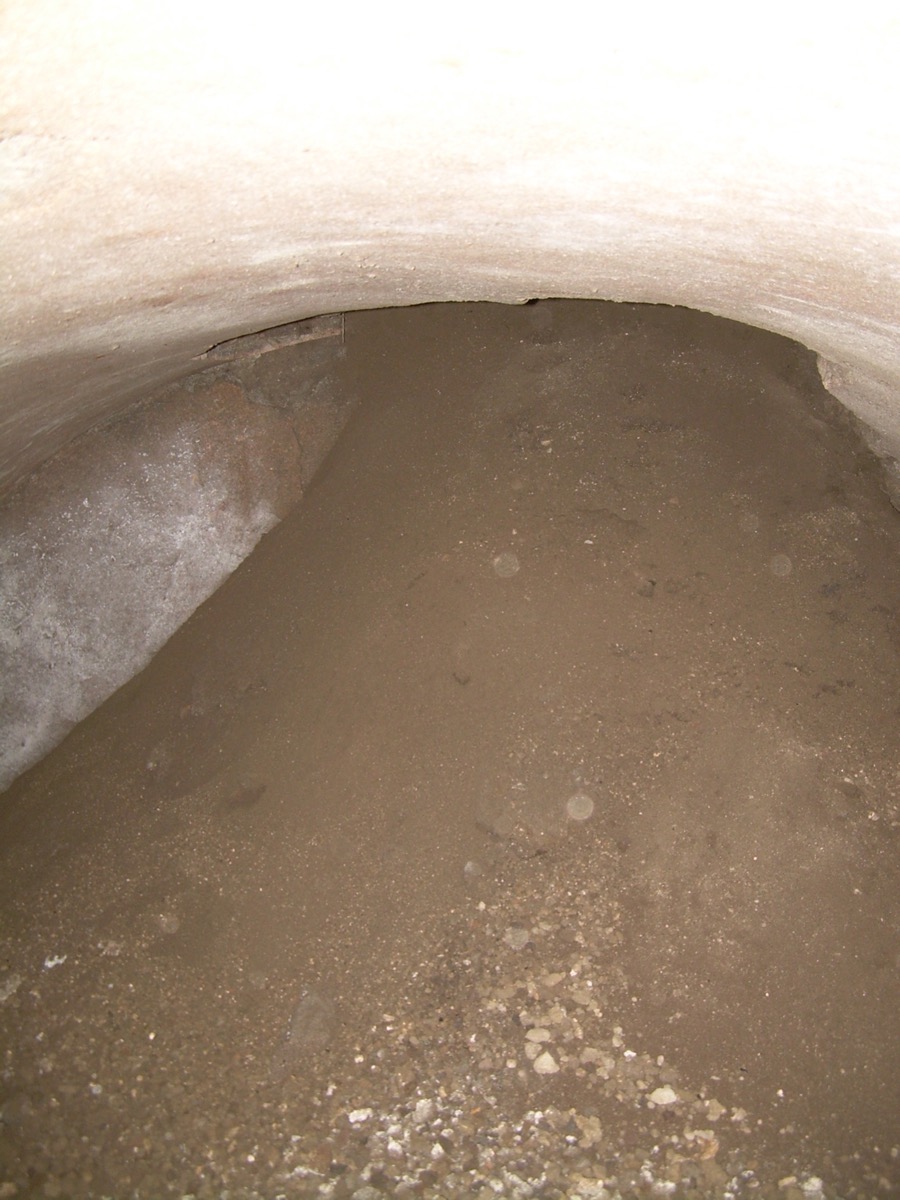Cistern
Description
Mats Holmlund
There is a large vault shaped cistern below the floor in room 1. Originally the cistern was circa 3.00 m long and 2.00 m wide, but at a certain point in time (probably at the earth quake of AD 62) it was partly destroyed and rebuilt, and after the reconstruction the length was reduced to approximately 1.80 m by the installation of a new partitioning wall in the middle of the original cistern. The depth of the cistern is unknown, but it is at least 3.00 to 3.50 m deep.
The earlier cistern
The opening of the earlier cistern is made of limestone and located circa 1.65 m from the north wall and approximately 0.40 m from the west wall (threshold). It is hard to determine the diameter of the opening since it is partly obscured by two limestone blocks, but like the extant opening, it probably was circa 0.40 m wide.
The blocks that obscure the opening are part of a repair of the cisterns broken ceiling. The repair consists of four limestone blocks placed in a north to south direction, while the opening is covered by a fifth block, placed in a northwest to southeast direction. The two limestone blocks closest to the threshold, rests on the fifth (rotated) block.
The limestone blocks are all spoliae from a wall of an earlier building and were probably used as façade stones, since there are remains of plaster on four of them (the stones used to mend the ceiling). The first stone (the one closest to the street) is 0.38 m wide and 0.83 m high and is located 1.30 m from the south wall and 0.35 m from the west wall. The extant plaster is located on its west side. The second stone measures circa 0.40 x 1.05 m (0.415 m including the plaster) and is located approximately 1.30 m from the south wall and 0.73 meter from the west. The plaster is located on the west side of the block. The third block is shaped like a "trapezoid" and measures 0.40 x 1.11 m (on its longest side) and is located circa 1.35 m from the south wall and 1.15 from the west. The plaster remains are on the east side of the block. The fourth block measures 0.39 x 0.77 m and is located approximately 1.65 m from the south wall and 1.75 from the west. The extant plaster is located on the east side of the block. The fifth block (blocking the mouth of the earlier cistern) measures 0.44 x 0.61 m and is located circa 2.10 m from the south wall and 0.30 from the west. There are no visible remains of plaster on this block, but like the rest of the blocks, it is probably a spolia.
The cistern was fed by a narrow and (at present) only partly extant water conduit that probably was connected to the conduit (or an earlier version of the conduit) in room 2. The extant part of the conduit is circa 0.90 m long and 0.10 m wide.
The later cistern
The later, reconstructed cistern was in use during the time of the eruption of AD 79. Its opening is located close to the doorway into room 2, approximately 1.55 m from the south wall and 0.35 m from the east. It has a rim of lava stone that consists of four pieces. The diameter of the opening is 0.40 m and the rim is between 0.17 and 0.21 m thick. A niche for a lid of the cistern is cut into the rim and is circa 0.02 m wide, but the lid itself is missing.
The cistern is connected to two interconnected water conduits. The first part of these conduits starts at the impluvium of the atrium of house V 1,3 (room 2) and ends in a cleansing hole located at the north side of the cistern. The second part begins at the cleansing hole and ends at the opening of the cistern in room 1 of taberna V 1,30. At the south end of the cleansing hole, there is a small opening that leads into to cistern. The opening is located just below the lava stone rim and consists of a small cylindrical piece of terracotta that could be plugged as to cut of the water supply to the cistern. The diameter of the terracotta cylinder is 0.05 m.
The inside of the cistern is coated with pinkish, hydraulic plaster. The plaster is largely intact, but the part of the ceiling farthest from the opening has collapsed, resulting in the cistern being filled with earth.
There is a part of a reused limestone block by the mouth of the cistern. It has been cut to fit the lava stone rim and the northern and western part of the rim rests in part on the block. In its present form it is 0.55 m long and 0.34 m wide. There are remains of plaster on the "opposing" side of the block.

